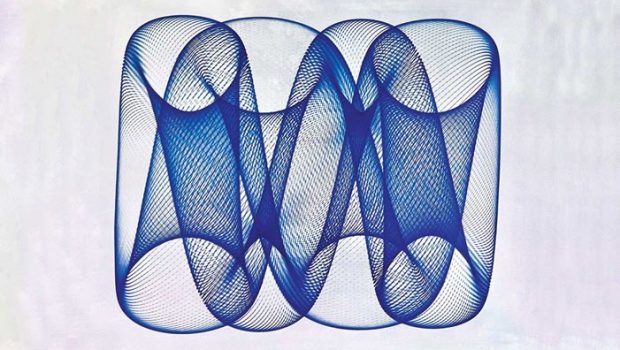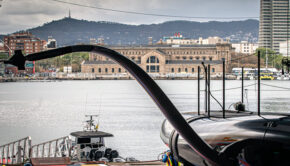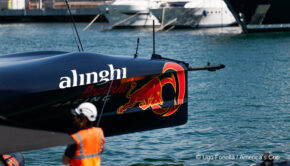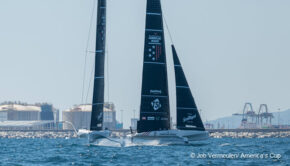Is tech turning sailors into passengers?
Published on October 18th, 2022
Technology can make us look pretty good on the race course. Digital compasses put our bow on the start line by tracking time and distance. Navigation software calls out layline to the mark and provides the best route when offshore. Speed polars guide us on how to steer and trim sails, while autopilots are so good now that the solo sailor rarely steers.
In the absence of rules, human ability has been augmented to such a degree that it is a question if someday the skipper will be watching the race from off the boat. The Scuttlebutt report, Headlong dive into engineering oblivion, wondered if the America’s Cup has gone too far.
“In my opinion, this ‘progress’ in the America’s Cup is not progress at all,” noted author Mark Johnson. “And we want kids to get into sailing? Get them on a computer, there are plenty of sailboat racing programs out there, and it’s a bunch cheaper than getting outside in a real boat, wind, water, laughter, fun, etc.”
Most people agreed, though one comment noted how “sailing decisions and choices still have to be made.” Certainly, but what are they? This report by Harvard Business Review points to the impact artificial intelligence had in winning the 2017 America’s Cup:
Sailboat makers and sailors have been refining their techniques for 5,000 years. Even though commercial shipping no longer relies on wind for propulsion, innovations in sailing have never stopped.
The top prize in sailing (and the oldest trophy in international sports) is the America’s Cup. Today the race is as much about technology as about the skills of the crew.
Millions of dollars go into boat design. Since the physics of wind, water, and ships are well understood, competitors use simulators to identify the most effective designs and to test boats without actually building them. The team with the best simulator gains a big advantage, as Emirates Team New Zealand discovered in 2017, when it won the cup.
As the members of the team planned for the 2021 race, they wondered if they could speed up the design process. Partnering with McKinsey, the global consultancy, they identified the main bottleneck to innovation: human sailors.
It takes time for a human crew to sail a boat in the simulator; there’s no way to increase the pace at which its members react to conditions and maneuver the boat in response. The sailors work on a human time scale, and that isn’t fast enough.
Using technology similar to the AI that beat the world’s top players of the popular strategy board game Go, the team taught an AI program to sail. The bot didn’t need to sleep or eat, and it could run thousands of simulations in the same time that it took the human crew to run just a handful. After eight weeks, the AI started to beat the sailors in the simulator.
That’s when things got interesting. The AI began teaching the human sailors new tricks. As a member of the development team told Wired magazine, “The bot was actually doing things that felt counterintuitive to the sailors, but they’d try them out on the water and they’d actually work.” Previously, the boat designers had needed humans to test out any innovation. Figuring out the best way to use a newly designed boat could take weeks.
The AI, in contrast, could experiment with multiple variations of the boat simultaneously, 24 hours a day. It could try different racing tactics. It sped up the cycle of design iteration and the development of new maneuvers. Once the AI figured out a superior solution, the human sailors could copy it.
As one team member put it, “Accelerating the learning process is extremely valuable, both in terms of allowing the design team to explore as much of the design space as possible and the sailors to maximize performance for a given design.” That year Emirates Team New Zealand claimed the trophy, winning seven races to three.
Why was this use of AI so novel? Setting aside the impressive technology that allowed for simulations in complex environments, the key impact was at the system level. The AI wasn’t handing Emirates Team New Zealand some insights. Instead, it was being built into a system of decision-making.
Race preparation involves two types of decisions: those about boat design and those about sailing maneuvers. While simulators had long been used for boat design, the maneuvers had always been worked out by humans.
The AI didn’t actually pilot the boat in the race—the rules still require that real boats be piloted by real people—but it sped up the innovation process and allowed better coordination between boat design and sailing maneuvers. The complete system of the simulated boat and the AI sailor enabled improvements to both kinds of decisions.









 We’ll keep your information safe.
We’ll keep your information safe.